Portugal has certainly become one of Europe’s “hot” travel destinations. Its grand capital city of Lisbon attracts the most visitors. However, Porto, its 2nd largest city, is also filled with wondrous delights – and is a must-see when touring this lovely Iberian country.
Internationally known for its port wine, Porto sits along the Douro River. An iconic arched metal bridge connects both sides of the river, each boasting a vibrant waterfront. This uber-picturesque town also features a tangle of red-roofed houses cascading down the hills of the old city.
- Dom Luis I Bridge / Click photos to enlarge
- Gaia on left – Porto to right
Just upstream, you’ll find the famed Douro River Valley where the majority of the world’s port wine grapes are grown and pressed. As you can imagine, port wine tours & tastings are big business here!
My Visit to Porto / Why This Blog Post
So, what exactly brought me to Portugal & Porto? The answer: I went to walk the Portuguese Camino from Porto to Santiago de Compostela, Spain with my friend Regina in late May/June 2023. However, before the walk, I “played tourist” & spent a week exploring Portugal’s three crown jewel destinations – Lisbon, Sintra and Porto.

With Rick Steves’ excellent self-guided walking tours, I explored the many corners of this delightful city, often more than once! In this blog post, I’ll share the many highlights of my Porto visit – sights and experiences that I highly recommend for your visit.
More About / Orientation to Porto
Porto (less commonly known as Oporto) lies on the hilly north bank of the Douro River. Across, on the south riverbank, sits the town of Vila Nova de Gaia (usually just called “Gaia”) with its famed port wine cellars. Technically, Gaia is a separate town, but for us visitors, it’s all part of Porto.
Porto is filled with beautiful & well-preserved architecture and Old-World charm. Fortunately, it was spared by the 1755 earthquake that devastated Lisbon. More recently, Porto has undergone a kind of “cultural renaissance” with tourism encouraging the formerly industrial town to develop trendy restaurants, cafes and enticing boutiques.
In this blog post, we’ll visit the 3 following areas of Porto:
- The Ribeira – Porto’s charming riverbank section
- Vila Nova de Gaia – the port wine district on the other side of the river
- Porto’s “City Center” – a relatively compact section filled with great visitor sights and interesting areas to explore.
PART 1 – THE RIBEIRA RIVERFRONT
Ribeira – Porto’s Romantic Riverfront
Today, the Ribeira is Porto’s most scenic and touristy quarter – sporting views that grace countless postcards & Instagram posts! Its riverside promenade is chock full of restaurants & outdoor cafes. Lying just behind are narrow cobbled lanes lined with colorful old houses.
In the past, the Ribeira (meaning riverbank in Portuguese) was a working port. In the 14th century, riverboats laden with wine & produce would tie up here. Workers would offload the cargo into the nearby stone cellars amidst arched arcades.
Today, many of the old stone arcades along Ribeira’s promenade are filled with souvenir shops & hole-in-the-wall restaurants. This is a great place for a leisurely stroll & people watching. And when your feet are crying out for a rest, you can stop for a bite at one of the many umbrella-covered outdoor cafes along the water or on the main square – Praca da Ribeira. (photo above) This is exactly what I did one day.
Living Statue
On the Ribeira, I enjoyed street art in the form of a clever human statue. I walked by an older man with a long white beard who was fully painted in white and sitting motionless at his cobbler’s table. Whenever someone dropped a tip into the tip jar, he would quickly hit the shoe with his hammer before becoming motionless again.
It was fun to watch him both surprise and delight passersby. Here’s a video of this “cobbler statue” in action. In fact, I asked that cute little girl if she would put my tip into the jar while I filmed him – and she delivered!
The Magnificent Dom Luis I Bridge
If you’ve seen any photos of Porto, they’ve most likely showed the riverfront & the massive wrought-iron Dom Luis I Bridge spanning the Douro River. The metal arch bridge, rising 150 feet above the water, connects central Porto & Gaia.
This beloved Porto landmark was designed in the 1880’s by Teofilo Seyrig, a protégé of Gustave Eiffel. (Yes, that Eiffel!) At the time the bridge was built, its 564-foot span was the longest of its type in the world. And the double deck design allowed road traffic to cross on both its upper and lower levels.
Today, due to bridge fragility, the upper span is only open to pedestrians and the Porto Metro – which runs right through the middle. I personally found it entertaining to watch trams emerge from a tunnel and pass right by you – luckily, with adequate room to spare! From this level, you can enjoy amazing views from both sides of the bridge.
And, as of April 2023, I’ve read that the lower section is open only to pedestrians, cyclists, taxis and public transport. So, during your visit to Porto, be sure to walk across the bridge on both levels – at least once. It offers terrific photo opportunities from very different vantage points.
“Six Bridges” Cruise on the Douro River
A popular visitor excursion is a “6 Bridges” Cruise. This 50-minute tour on the Douro takes you upstream a ways. Then the boat turns & heads back downstream past Porto and out to the mouth of the river, close to where the Douro meets the Atlantic Ocean. Along the way, you pass under 6 bridges – 2 of which are steel and 4 concrete.
I love boat tours, so I knew the cruise was a must-do. Regina & I booked a cruise operated by Tomaz Do Douro at a kiosk along the Ribeira promenade. The cruise cost 18 euros each. There may be at least one other company offering essentially the same tour.
Like most of the people, we sat on the boat’s upper deck for good views. It’s a great way to see landmarks and parts of greater Porto that you can’t see when touring in the central city. Turns out, it’s only a short 2 miles (3 km) from central Porto to where the Douro meets the Atlantic. Yes, it was a fun & worthwhile trip that I highly recommend.
PART 2 – VILA NOVA DE GAIA (GAIA)
As mentioned, Gaia is the port wine district directly across the river from Porto. Its riverfront promenade is also delightful for a stroll, with restaurants, outdoor cafés and wine lodges lining the way. Plus, you’ll enjoy photo-worthy views back toward Porto.
More About Port Wine: The story actually begins about 60 miles upstream in the Douro River Valley. For generations, farmers have grown port wine grapes on hand-built stone terraces. Even today, the grapes are primarily harvested and crushed the traditional way. Then, after sitting in silos for the winter, the wine (in barrels) is floated on boats downriver to Gaia to mature for years in the wine lodges.
In Gaia, you’ll notice distinctive-looking boats – called rabelos – moored along the embankment. These historic boats were once the only way to transport wine from the Douro Valley. They have flat bottoms, big square sails, and large rudders, designed to navigate the winding and fast-flowing river. And today, modern tourist boats often copy the rabelo style.
You might also be interested (as I was!) to learn that Portugal’s Douro Valley is the only place in the world that can legally produce what is called “port wine.” If you want to know more, check out this Rick Steves article.
Port Wine Lodges
So, as you can imagine, Gaia is the mecca for port wine lovers! Here Port companies have their “lodges” (aka warehouses or cellars) in which the wine is traditionally aged and blended.
Well over a dozen companies run these lodges – with the majority open to the public for guided tours and tastings. There are also several independent tasting rooms. Along the Gaia promenade, you can see the signs of 18 different company names proudly marking their lodges here.
In planning my visit to Gaia for a wine tour, I found Rick Steves’ guidebook helpful. I’ll share some of his information below.
Port tasting is a subjective business, and no single lodge is necessarily the best. At any lodge, the procedure is similar. A standard tour/tasting takes about 30 minutes.
Tours generally come with a walk through the warehouse with wooden barrels and vats – and a 5 to 10-minute video produced by that label gives you a quick peek at their process and the scenic Douro Valley. Sometimes there’s a small museum and finally 2 or 3 tastings. Tours at fancier lodges (like Taylors) take longer and cost more.
My Calem Port Wine Tour
Okay, first two confessions. #1– I’m pretty much a non-drinker. But as they say: “When in Rome, do as the Romans do.” So, a port wine tour was another must-do! Of course, I was more interested in the tour than the tasting. #2 – I visited popular Gaia at the end of May on a Saturday afternoon during the 2023 frenzied summer tourist season. Yikes, can you say crowds?
In the guidebook, I had highlighted Sandeman & Calem as two good tour choices. Sandeman, with its very recognizable logo, is a large operation and Gaia’s most high-profile company. I went there first but their English-speaking tours were sold out for the rest of the day.
I headed to Calem next, which also has a good reputation for its tours and port wines. They still had tours available, but the English & Spanish ones were also sold out. So, I decided to sign up for the Portuguese tour (starting just 30 minutes later), even though I do not speak Portuguese. The 17-euro ticket included a 30-minute tour & 2 tastings.
The Tour
After a short riverfront walk, I returned to Calem at 3:20pm to show my ticket and enter their small but nice wine museum. After 10 minutes, our delightful guide collected the Portuguese group to begin the tour. Even though I didn’t understand much (okay, almost nothing!) of what he was saying, he was fun & animated – and the rest of the group was clearly enjoying the tour.
For me, I found it interesting just to walk through the various cool, damp wine cellars, filled with huge oak barrels and casks where Calem’s port was aging. Then, our guide escorted the group upstairs to a large tasting room where we were given two port tastings – one red & one white.
At my table, I chatted with three friendly Brazilian women. After I took a quick sip, they were quite pleased to drink the rest of my two glasses of port. And of course, after the tasting, the exit led directly through Calem’s large wine shop where you could purchase port wine to your heart’s content! Not surprisingly, sales appeared brisk!
Gaia’s “Food Court” Mercado
The next day, I returned to Gaia with Regina (who had just arrived the night before) to show her the charming riverfront. Just as we were feeling hungry, we stumbled across a delightful “food court” located inside a historic pink building with the name – Mercado Municipal da Beira-rio – atop the entrance.
The Mercado had multiple stations with lots of delicious food choices. I ordered a mushroom & cheese quiche and Regina had a bowl filled with healthy choices from a nice buffet. We ate outside on a quiet street at the back of the building. This was perfect for a fast & inexpensive lunch – offering another good option to Gaia’s tourist-filled waterfront cafes.
Getting to Gaia
There are a few fun & scenic ways to get from Porto to Gaia (and vice versa) – and I’ve done them all. I recommend shaking it up & trying some different ones. For example, you could walk over the Dom Luis I bridge one way from Porto and take the water taxi back. Here’s all the possible ways.
Porto to Gaia Options:
- Walk the lower section of Dom Luis Bridge
- Walk the upper section of Dom Luis Bridge & take the Cable Car down to the waterfront.
- Take the Douro River water taxi
Cable Car – Teleférico de Gaia
One day, when I had finished exploring the Porto Cathedral (in the upper part of Porto), I discovered that the entrance to the upper section of Dom Luis I Bridge was nearby. So, I walked across the bridge, loving the gorgeous views all along the way (and taking lots of photos!). As you exit the bridge into Gaia, there is a pretty park right there – the Jardim do Morro. (photos below)
There, also, you’ll find the entrance to the Cable Car station. The Teleférico takes you on a 5-minute ride from the upper section of Gaia down to the riverfront, far below. The cost was 7 euros. Conveniently saving time & a long downhill climb, I enjoyed more unique views on my way down. Of course, you can travel the other direction up.
Douro River Water Taxi
As you’ve seen, Gaia’s & Porto’s waterfronts sit directly across from each other. The Douro River Taxi runs an incredibly convenient shuttle service between the two sides. My ride took less than 5 minutes and cost 3.5 euros. What’s not to love about a water taxi service like this?
PART 3 – PORTO “CITY CENTER” SIGHTS
Porto’s City Center rises steadily upward from the Ribeira riverfront. This relatively compact area contains the main sights of particular interest to visitors – and is very walkable. However, it’s quite hilly so comfortable walking shoes are a must. Not to mention necessary for all the cobblestone sidewalks and streets characteristic to Portugal!
Besides cobblestones, Portugal is known for its beautiful blue & white Azulejo tiles. These glazed ceramic tiles from the 14th century adorn monuments, churches and other buildings throughout the city. Not just decorative, they usually tell a story about various aspects of Portuguese history and culture.
The pretty church in the photo to the right with the lovely azulejos adorning its exterior is Church of Saint Ildefonso.
I followed the Porto Walking Tour in Rick Steves’ guidebook on my first day. It offered a great orientation to the city. And the route took me by all the city’s many sights, both well-known and hidden gems.
In this section, I’ll share key City Center sights that I particularly enjoyed – and ones I think you might also enjoy on a future Porto visit. They’re listed in no particular order.
Porto Cathedral
Perched on a hill overlooking the Douro, this 12th C. Romanesque cathedral is graced with 18th C. Baroque altars. Its fine granite stonework is typical of northern Portugal. However, the highlight for me was a visit to the church’s wonderful adjoining cloister and its view tower.
- Cathedral / Cloister / Pillory “statue”
- Bishop’s Palace
The Cathedral is free to enter but there’s a 3-euro cost to visit the cloister and tower. Many of the cloister’s walls, which surround a central courtyard, are decorated with lovely azulejo tiles. From the second level, I climbed the tower’s stone steps to reach a 360-degree platform deck with superb city and river views!
Outside the church, in the middle of Cathedral Square, there’s a large Baroque spiral pillory (20th C. copy) and more viewing points from the side stone bannisters. Across the square is the massive Bishop’s Palace, still the home of the bishop and his offices. It’s open for tours but I did not do so.
- View from tower of courtyard & Bishop’s Palace

So, of course, Regina & I took our photo by the Camino marker – since we’d be starting our 13-day Camino walk to Santiago the next day.
If you’d like to know more about our Portuguese Camino experience, here’s a link to my recent blog post with highlights. click here.
Gundais Funicular
Located just a short distance from the Cathedral (and the upper level of the Dom Luis Bridge), this very handy Funicular connects the riverfront district down below to the top of the steep hill sitting above. In fact, this is Porto’s only public-transit option for saving yourself the steep hike.
My hotel was only about a 5-minute walk from the upper station of the Gundais Funicular, so I used this option a couple times – once up and once down. The funicular runs every 10 minutes, costing 4 euros per ride. The lower station is found at the base of the Ponte Dom Luis I Bridge. So, here’s another Porto attraction that’s fun, scenic AND practical – just like the River Taxi!
Henry the Navigator Square
This pretty square is located a couple blocks from the riverfront. In the middle is a large statue of Henry the Navigator, pointing a finger toward the sea. Prince Henry (1394 -1460) was the middle child of the King of Portugal and Queen of England. He was considered one of the most influential Portuguese persons of all times.
- Credit: Deposit Photos / Henry the Navigator statue
However, Prince Henry never sailed on any ships. Instead, he was a quiet scholar, a religious man, an organizer, and the brains behind Portugal’s daring sea voyages. He sponsored many voyages of discovery along the western coast of Africa – which helped begin & drive the Age of Discovery during the 15th & 16th centuries. Unfortunately, this included the West African slave trade.
Stock Exchange Palace (Palacio da Bolsa)
Fronting the entire western side of the square, you’ll see an enormous building with a beautiful neoclassical façade. Despite its name, it is not a palace nor a stock exchange! In fact, it has been the headquarters of the Commercial Association of Porto since being built in 1842.
- Credit: Deposit Photos / Palace’s Arabian Hall
Apparently, the palace contains some of the most lavishly decorated rooms in all of Portugal. This includes the glass-domed Hall of Nations & the gilded Arabian Hall, which was designed to mimic Granada’s Alhambra Palace.
You can only visit the palace’s inside areas on a 45-minute guided tour. Unfortunately, I didn’t have the time. However, I’ll be sure to do so on a return trip as this is one of Porto’s most popular visitor sites.
Sao Bento Railway Station
This bustling train station, located in the heart of Porto’s old city, is one of Portugal’s most beautiful. Built on the site of a former Benedictine convent, the Sao Bento station started operating in 1896. However, the massive 3-story building (built in a “Beaux-Arts” style) was not completed until 20 years later.
Sao Bento’s lovely main entry hall contains some of Portugal’s finest azulejos, featuring both Portuguese history and folk scenes from the Douro region. Over 20,000 tiles were created by artist Jorge Colaco over an 11-year period (1905–1916).
- Click on all photos to enlarge
I loved the Sao Bento station and visited several times as I passed by on my walks. I enjoyed viewing the different tile sections & reading about them in my guidebook. Not to mention, like all train stations, it offered conveniences like a public toilet and snack food when out touring.
Clerigos Church & Tower

This baroque masterpiece, built between 1735 and 1748, was designed by famed Italian architect Nicolau Nasoni. Clerigos tower itself was built in six sections and completed in 1763. At the time, the tower was the tallest building in Portugal.
Even today, it’s the highest structure in Porto’s historic center – and a good landmark for getting your bearings as you tour.
The oval-shaped church is free to visit. However, the main attraction is climbing the 240 steps to the top of the Clerigos campanile for great views. However, there is a fee for the tower along with usually long lines. So, I took a pass and just visited the inside of the pretty church.
 Livraria Lello (Bookshop) & Harry Potter
Livraria Lello (Bookshop) & Harry Potter
Calling all Harry Potter & bookstore fans. This Porto sight is for you! Built in 1906, Livraria Lello is considered one of the world’s most beautiful bookstores. Its Neo-Gothic exterior still bears the original name – Lello & Irmão. The Art Nouveau interior features elaborately carved arches, a stained-glass ceiling, and a curvy & ornate red central staircase.
It’s been said that British writer J. K. Rowling was inspired by this Harry Potter-esque shop in the creation of Diagon Alley’s “Flourish & Blotts” bookstore where the Hogwarts students purchased their schoolbooks.
In fact, Rowling lived in Porto between 1991 and 1993, where she taught English. Those years were formative for the Harry Potter series and Rowling reportedly wrote the first three chapters of Harry Potter and the Philosopher’s Stone before returning to the U.K. And after lots of rejection letters, her first book was published in 1997 – and the rest is history!
- Credit: Lello Bookshop
- Credit: Lello Bookshop

Pro Tip: Buy your ticket in advance on the Lello Bookstore website (with a specific entry time) to avoid waiting in long lines. I will confess that I did not plan ahead & buy my ticket. So, not wanting to wait, I only viewed the outside of the bookstore. Next time…
Praca de Lisboa Park
This small, grass-filled park, which is dotted with olive trees, cleverly sits atop a parking garage in the historic heart of the city. The middle level (just below) contains a mall & commercial space lining a pedestrian walkway that connects Lello Bookstore on one side & Clerigos Tower on the other.
Completed in 2013, the park is a wonderful example of innovative urban planning. On the top level, you’ll find “Base,” a stylish outdoor bar that serves drinks (no food). The park offers a lovely & peaceful place to rest for a while amidst your active sightseeing.
Porto’s Grand Boulevard & City Hall
A short distance north from Sao Bento station, you’ll find the Praca de Liberdade square & the start of a grand boulevard named Avenida dos Aliados (Avenue of the Allies). Inspired by early 20th C. Paris, this boulevard is lined with magnificent buildings in various architectural styles, primarily Art Nouveau & Art Deco.
I do recommend a quick walk up and down both sides of the pretty avenue. Along the way, make sure to pop into “Imperial McDonalds” (on the east side) to check out the cool interior. Housed in what was once the Imperial Café, this is one of Europe’s fanciest McDonalds. Note: You will need to buy something to use their bathroom. Yes, I did try!
Porto’s beautiful City Hall, with its green copper-domed tower, sits at the top of the boulevard. Built in 1957, it overlooks a simple square with the always-popular-for-photos blue PORTO sign. Get ready to line up for your selfie or group Instagram shot!
Rua das Flores – Pedestrian Walking Street
The lovely pedestrian-only “Rua das Flores” street begins at Sao Bento station and heads down towards the riverfront. Rick Steves writes: A decade ago, this was a deserted no-man’s land – today it’s a touristy main drag. And yet, there are some funky graffiti (a Porto specialty) and ragtag housefronts still survive as reminder that Porto is a work in progress.
- Credit: TripAdvisor (both photos)
Along Rua das Flores are lots of outdoor cafes, cute boutiques and other enticing shops. I’m not a big shopper myself, but I was drawn into a store displaying beautifully designed leather purses and other items in a wide array of luscious colors. The shop was called MUD – “Manufacture Under Design.”
From the delightful shopkeeper, I learned that MUD is a “family business,” started & run by members of his family. With just 11 employees, the products are made in a factory 30 miles away. I bought a beautiful blue leather coin purse, which he proudly polished for me before wrapping it. I also felt good about “Buying Local!” (Note: It’s actually located on Rua de Sousa Viterbo, just south of where Rua das Flores ends & you continue down to the riverfront)
My Porto Rain Story
Apparently, Porto’s weather is always changing, with clouds blown in and out by the steady ocean breeze. During my time in Porto, skies were frequently overcast, occasionally filled with ominous dark clouds. But you never knew if and when it might rain. Luckily, I always carry a travel-sized umbrella with me when out touring for the day.
I was walking on Rua das Flores when I first experienced a typical Porto rainstorm. It started to sprinkle, quickly turning (in less than 30 seconds) into pouring rain with thunder. It was wild – everyone was running for cover. I leaned against a wall with my umbrella, which kept me dry. Water began to flow rapidly down the streets. Just ten minutes later, the rain suddenly stopped, the sun came out, and everyone quickly returned to business as usual. Welcome to Porto!
Pro Tip: Always carry an umbrella when touring Porto!
Rua Santa Catarina – Upper Porto’s Shopping Street
Porto’s bustling, local-feeling shopping district is mostly centered along the Rua Santa Catarina. The street runs from the Praca da Batalha (square) quite a few blocks north to the area by the Bolhao Market. Since it was close to my hotel, this became my “home away from home” neighborhood.
- Credit: Deposit Photos
- Tango dancers performing on Rua de Catarina – for tips!
Mostly traffic-free, Rua Santa Catarina is filled with regular stores, shops, cafes, restaurants, bakeries, pharmacies, and the large FNAC Department Store. Plus, it’s a fun & safe place to walk at night. My first evening, I found a wonderful healthy food restaurant named “Honest Greens” (its motto is “Eat Real”) and I returned for dinner a second night!
Pastel de Nata – Portugal’s Iconic Dessert
Last but not least, let’s talk about dessert! Portugal is famous for its pastel de nata, a sweet and creamy egg custard tart with flaky crusts and caramelized surfaces. Yes, I ate quite a few of these pastels during my time in Portugal – and they are truly delicious!
- Credit: TripAdvisor
Whether in Lisbon or Porto, you’ll find pastel de natas in many bakery windows. However, I’d suggest you search out places that specialize in the making of these iconic custard tarts. In Porto, one place I can recommend is Manteigaria bakery & café, which is located across from the Bilhao Market (a block west from Rua Santa Catarina).
- Credit: TripAdvisor
- Credit: TripAdvisor
Manteigaria has a large operation where the staff is busy making pastel de natas behind glass windows – so you can observe the process. This includes cutting up long, round logs of dough to fill pastry tins to make the crusts. Crusts are then filled with the custard before placing them into large ovens. I found the process quite interesting. (check out the video below). Of course, the best part is popping a freshly baked tart into your mouth to enjoy! Yum…
- Credit: TripAdvisor (both photos)
FINAL REMARKS / RESOURCES
As you can now appreciate, there’s a lot to see & do in Porto. So, I recommend you spend no less than two full days in Porto – and 3 days is even better to enjoy your sightseeing of this lovely town at a more leisurely pace. As mentioned, there were a few sights I didn’t have the time to visit, like the inside of the Stock Exchange Palace or the Lello Bookstore.

- Rick Steves Portugal Guidebook – excellent / one that I highly recommend!
Getting To & Around Porto:
- You can fly directly into Porto’s international airport
- The train from Lisbon to Porto takes approximately 3 hours (like I did!)
- Ubers work well within Porto – I used them twice (including from the train station to my hotel).
Hotels in Porto
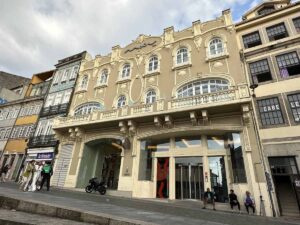
After a lot of research, I booked one of the hotels listed in Rick Steves’ guidebook for my 4-night stay – Moov Hotel Porto Centro. I booked it through Booking.com.
I was very pleased with the hotel and its staff. It has a great location in City Center – located on the Praca de Batalha plaza near Rua Santa Catarina – and just a 5-minute walk to Sao Bento station. Moov has 125 sleek, modern rooms which occupy a remodeled movie theatre. (photo above)
I HOPE YOU ENJOY YOUR VISIT TO PORTO!
COMMENTS: Have you visited Porto? What did you think? What were some of your favorite sights or experiences?











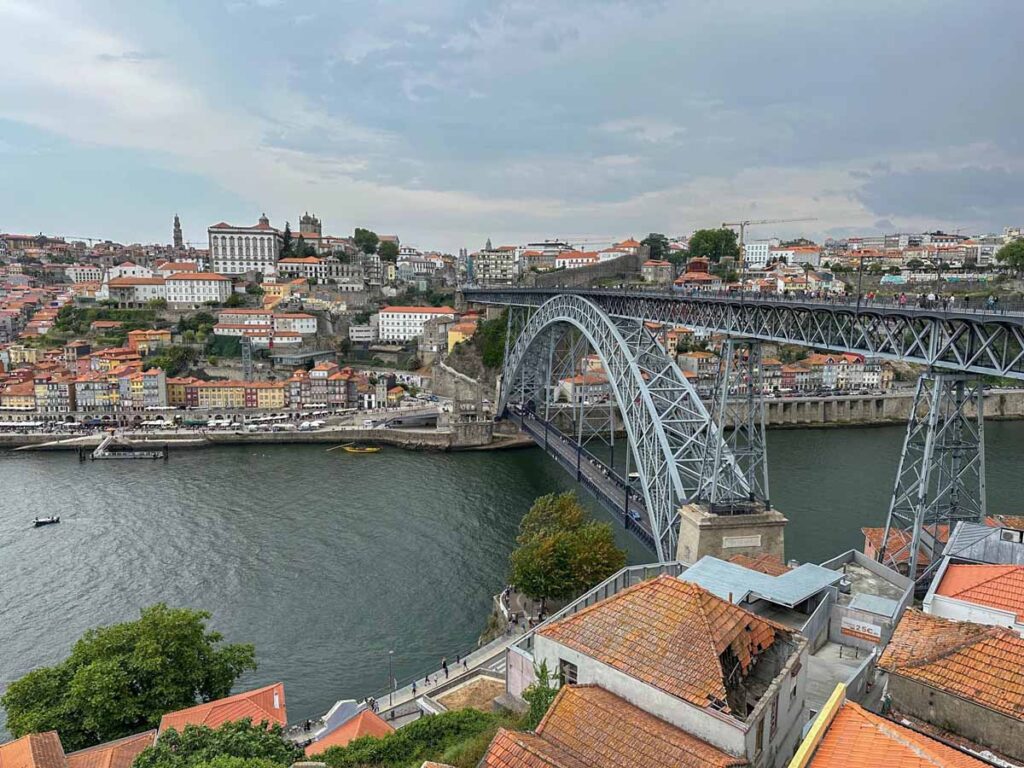
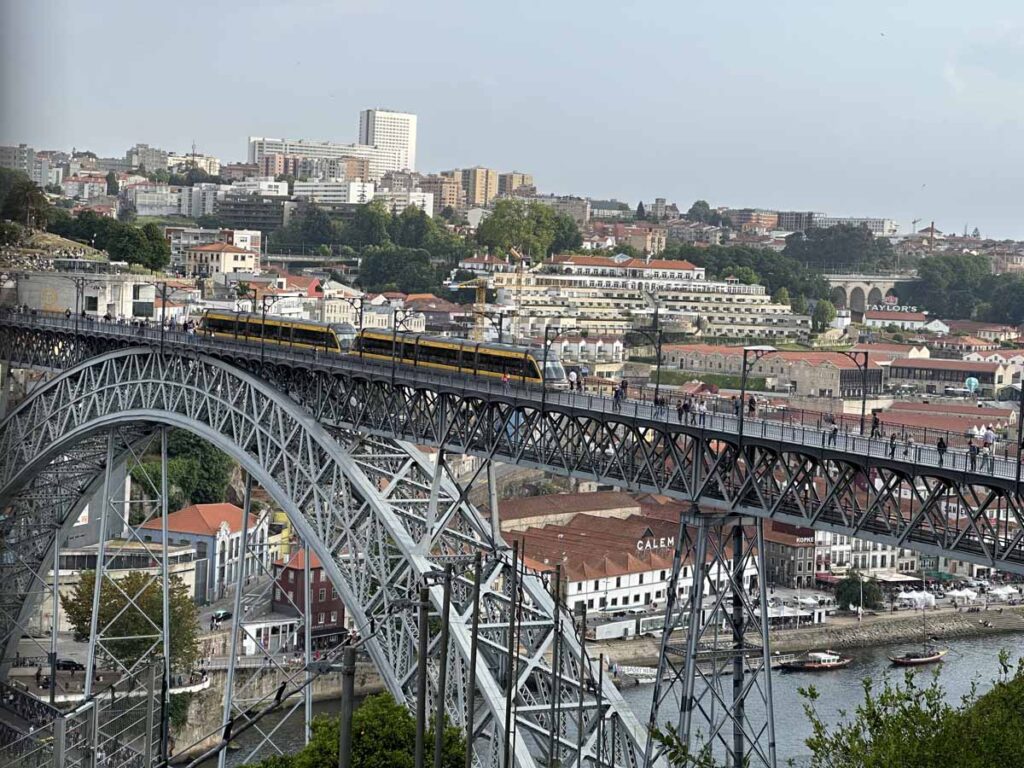









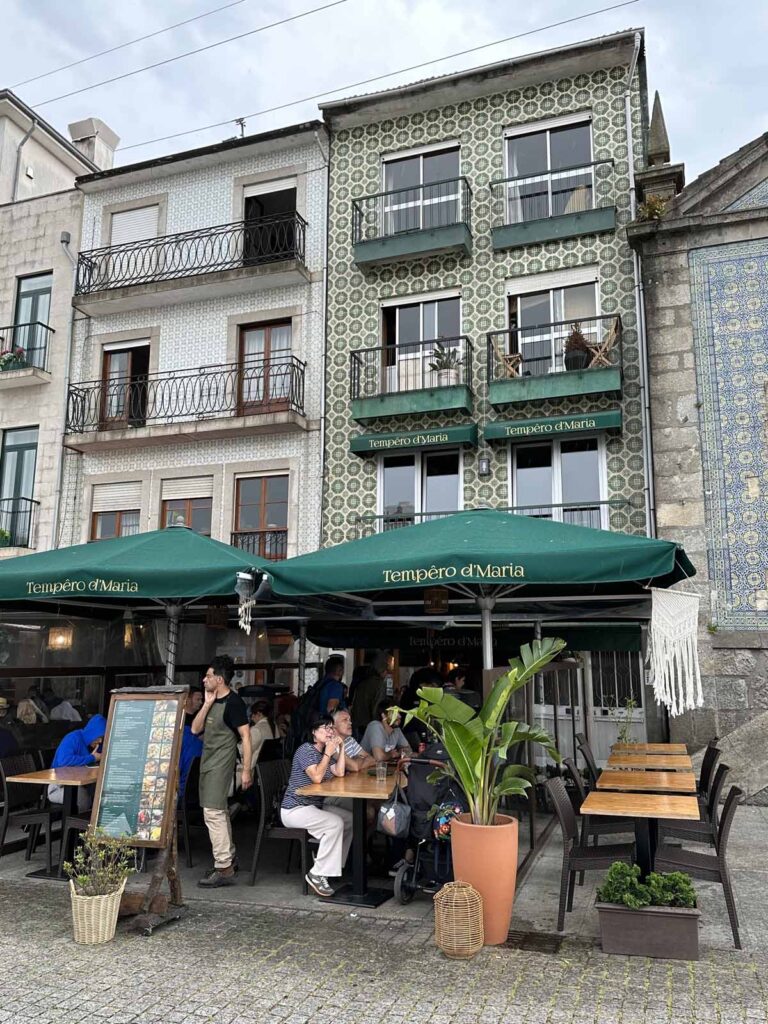




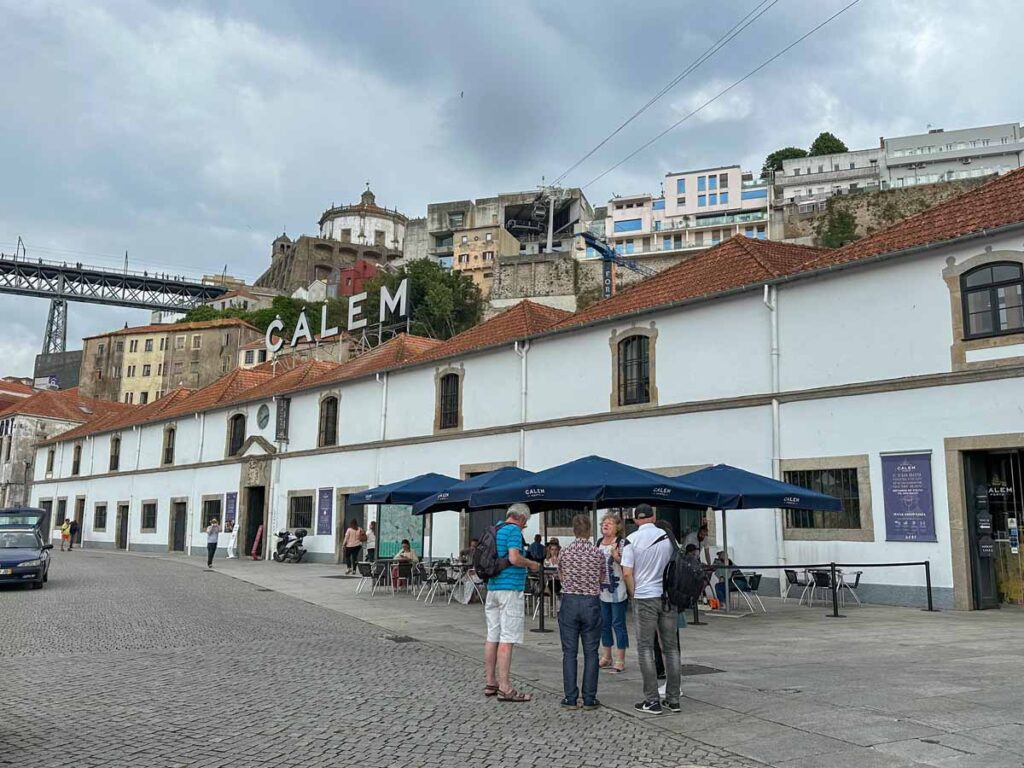



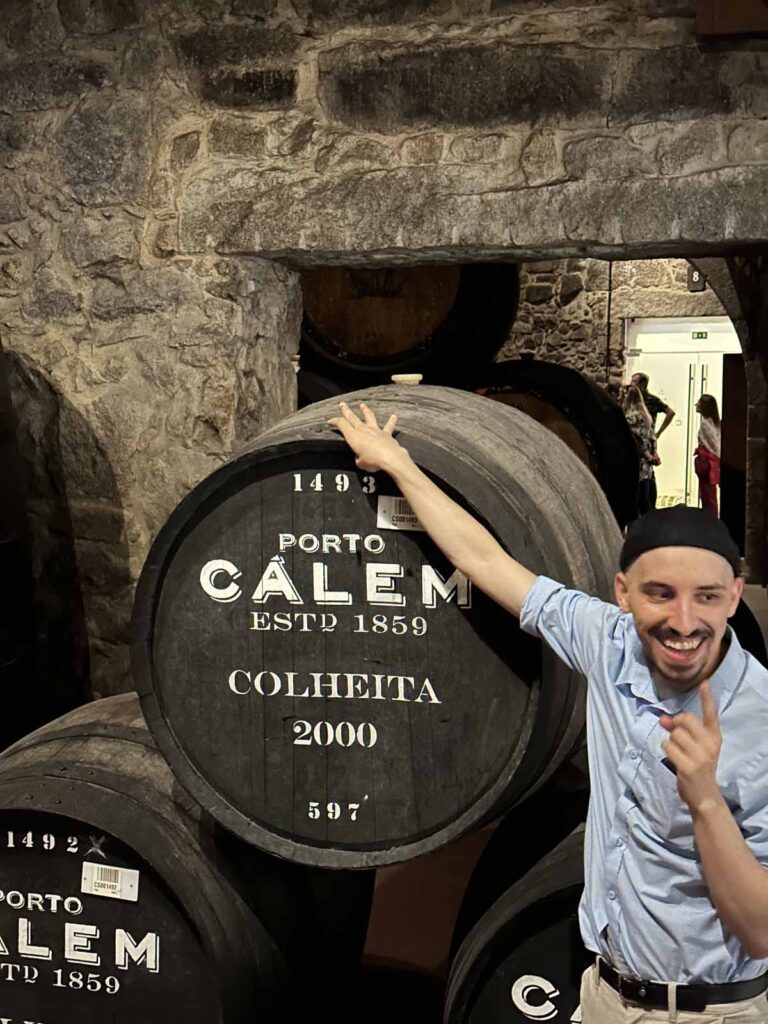

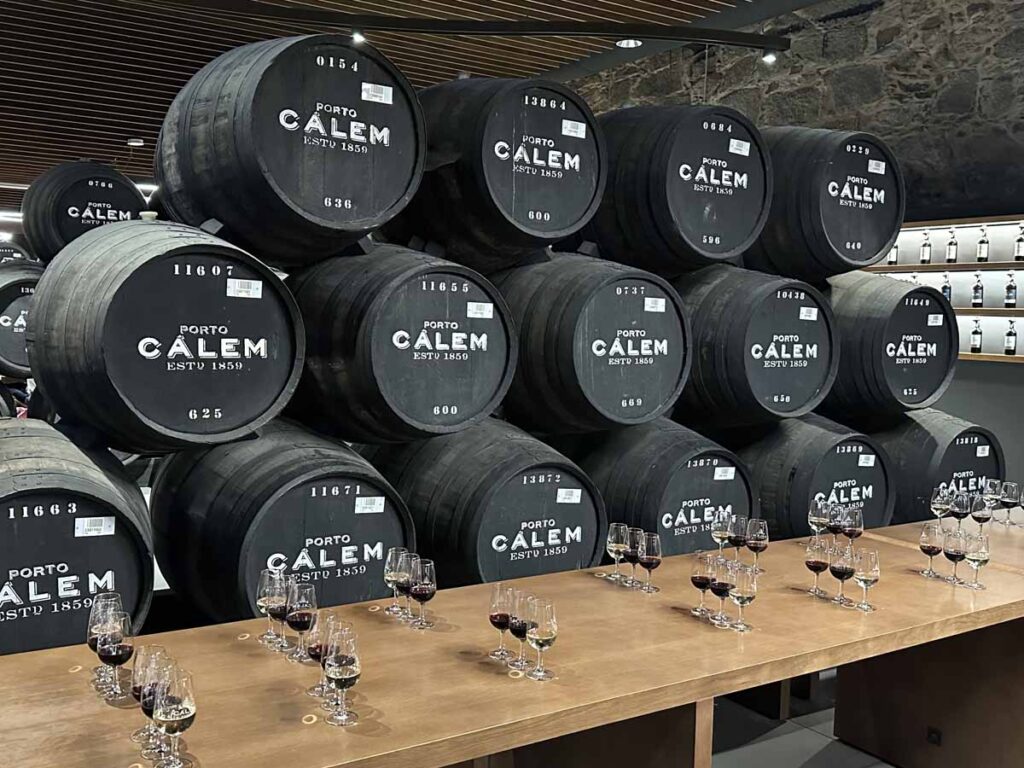

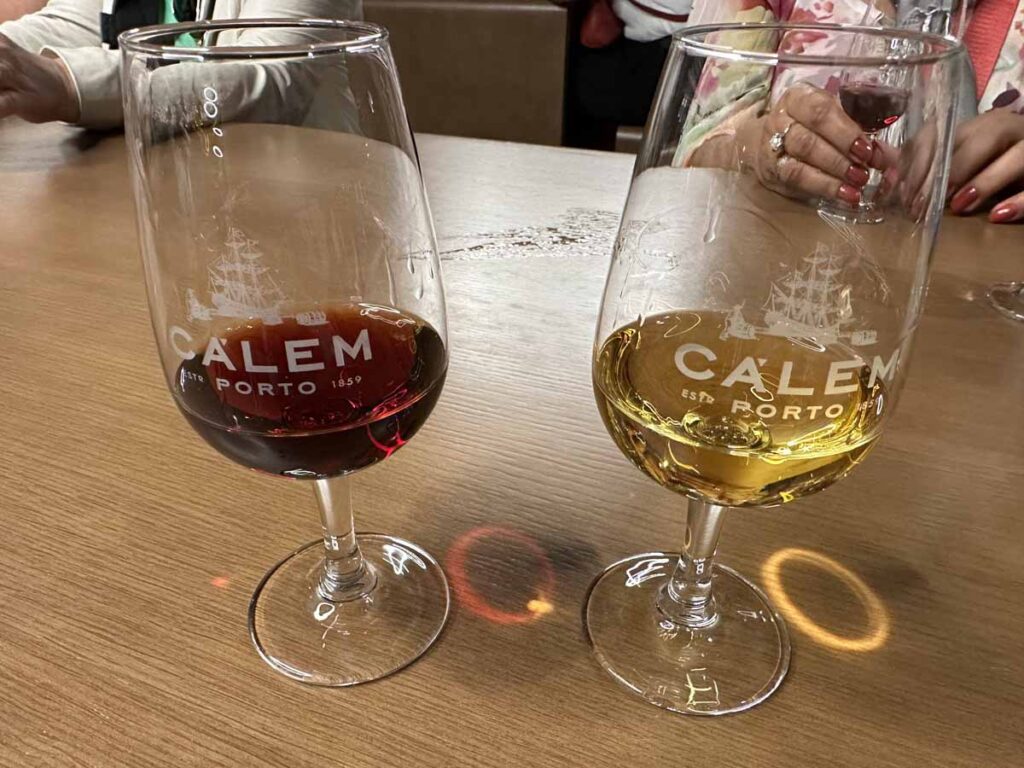







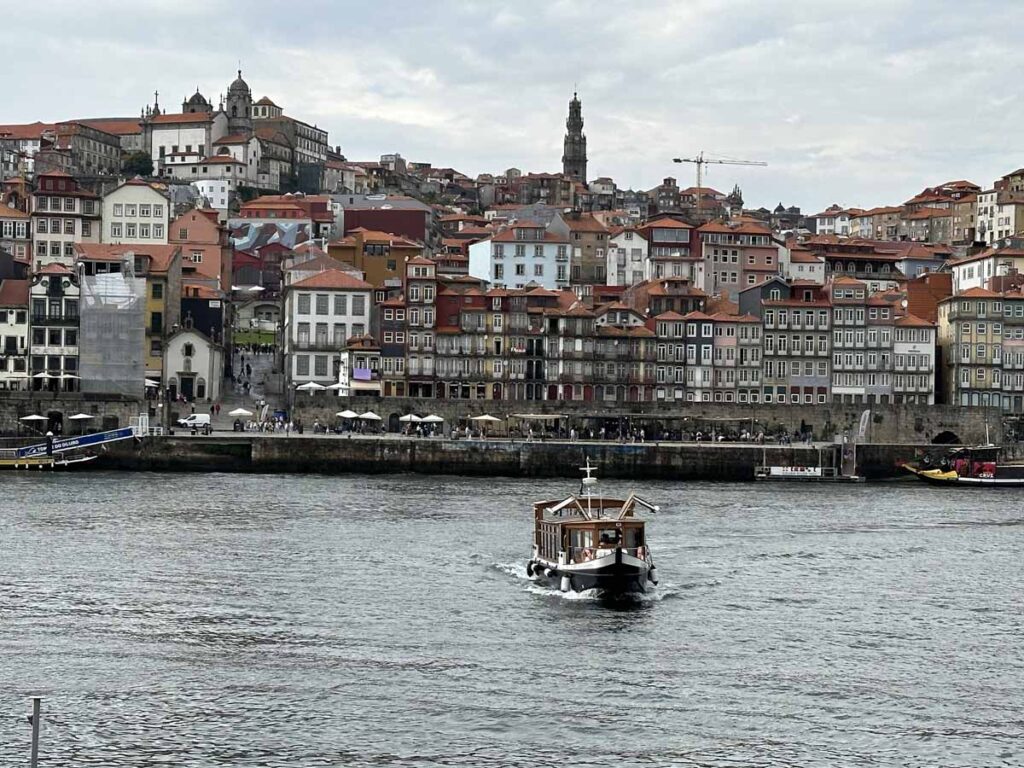
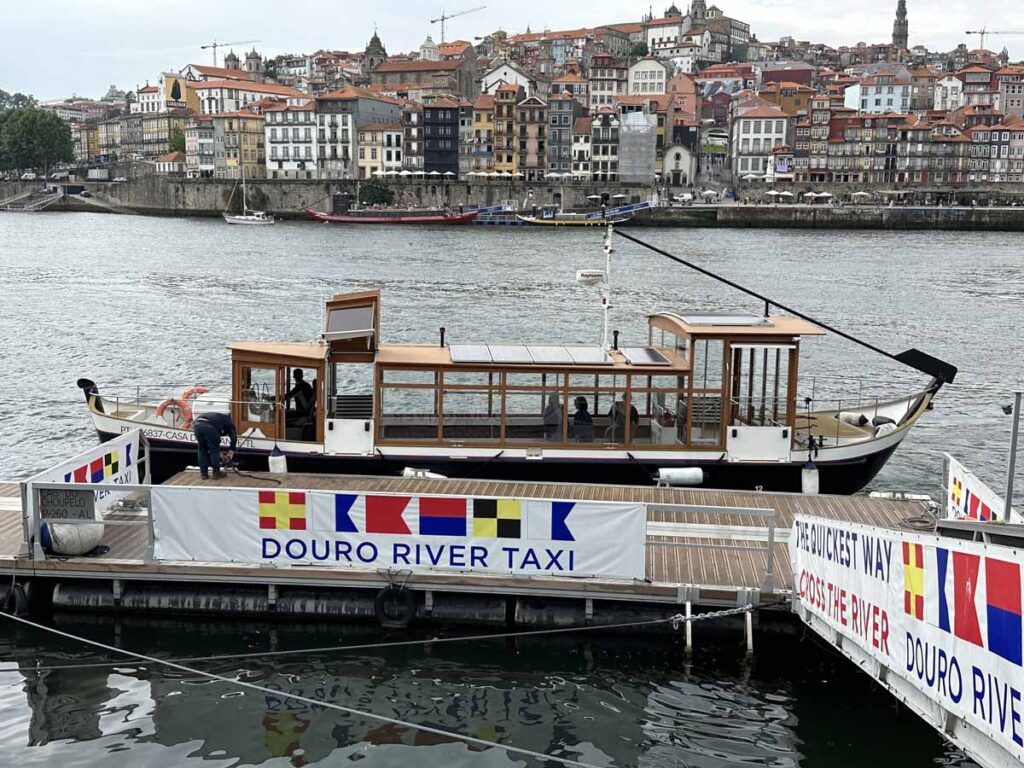






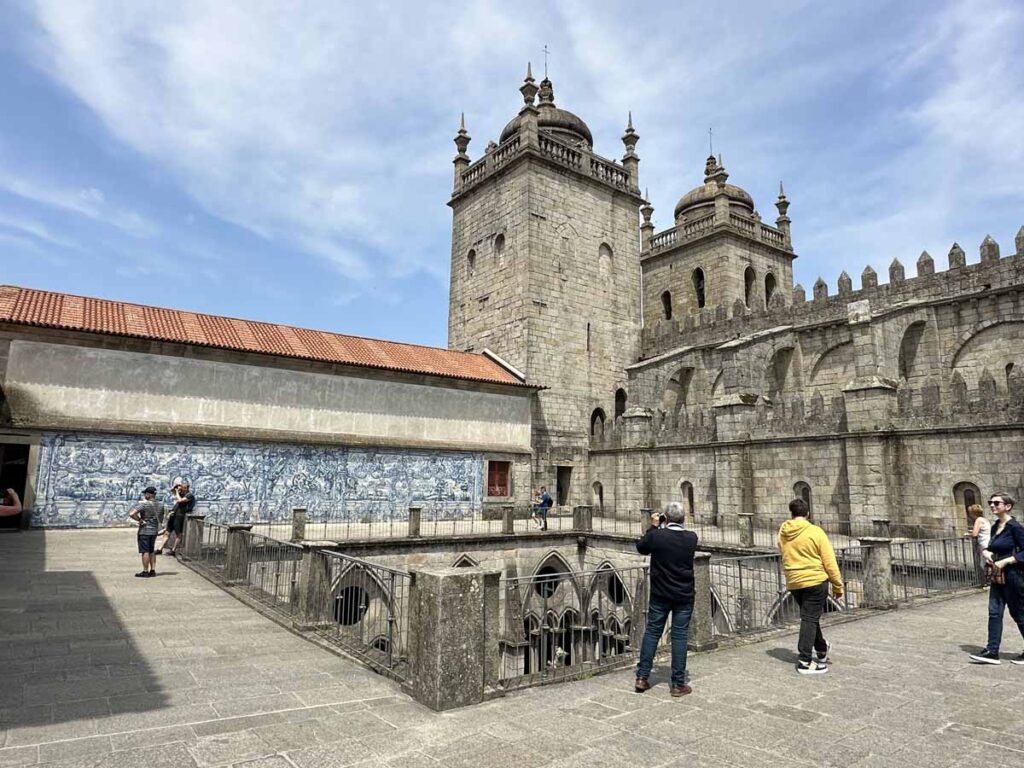
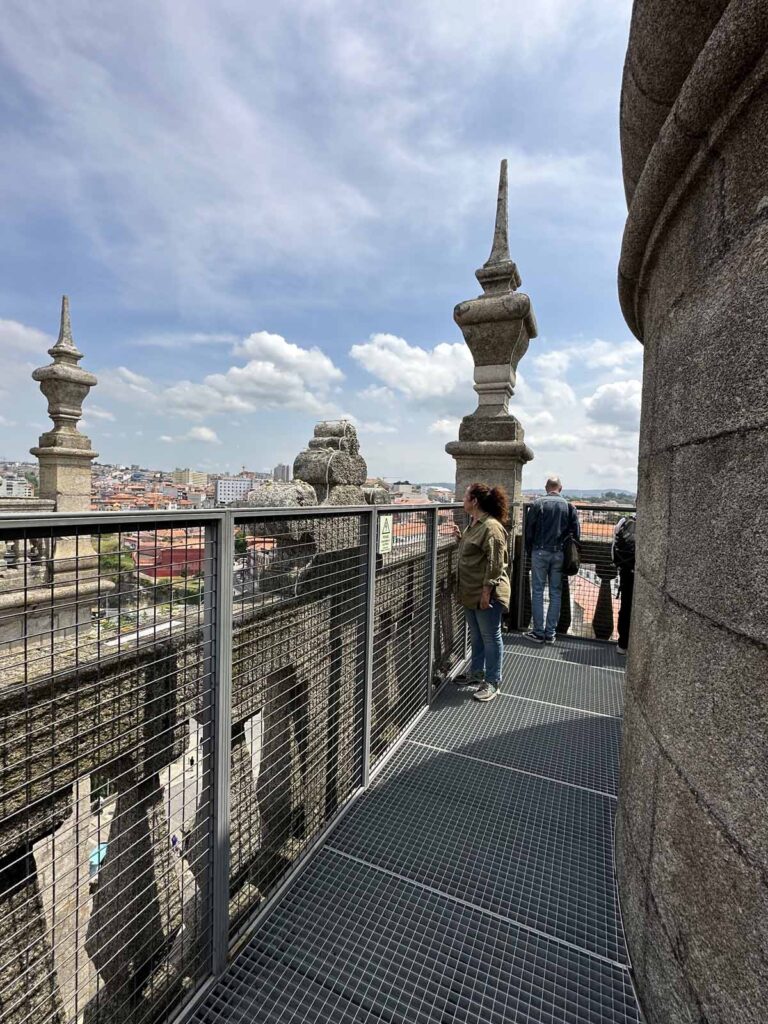


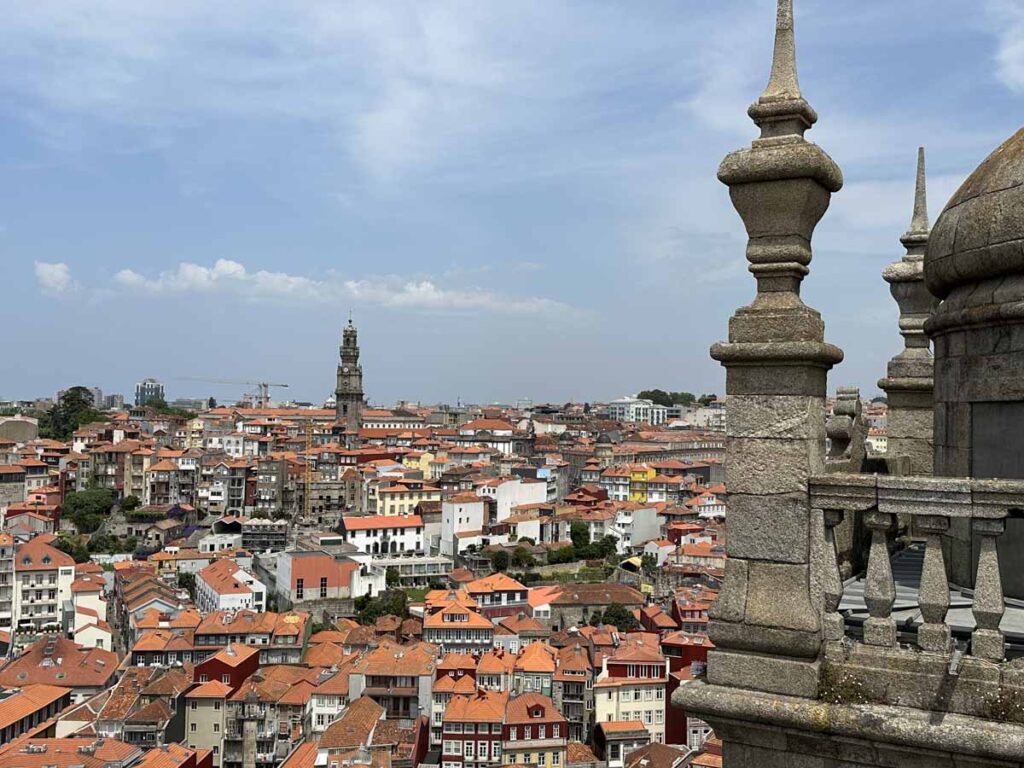






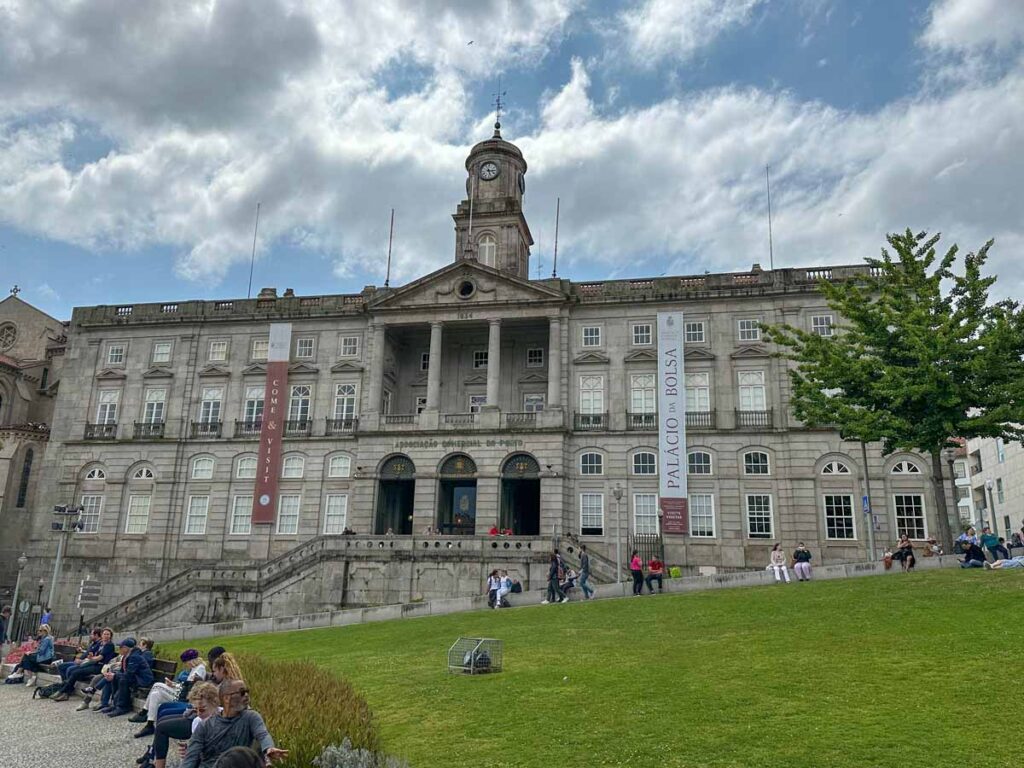



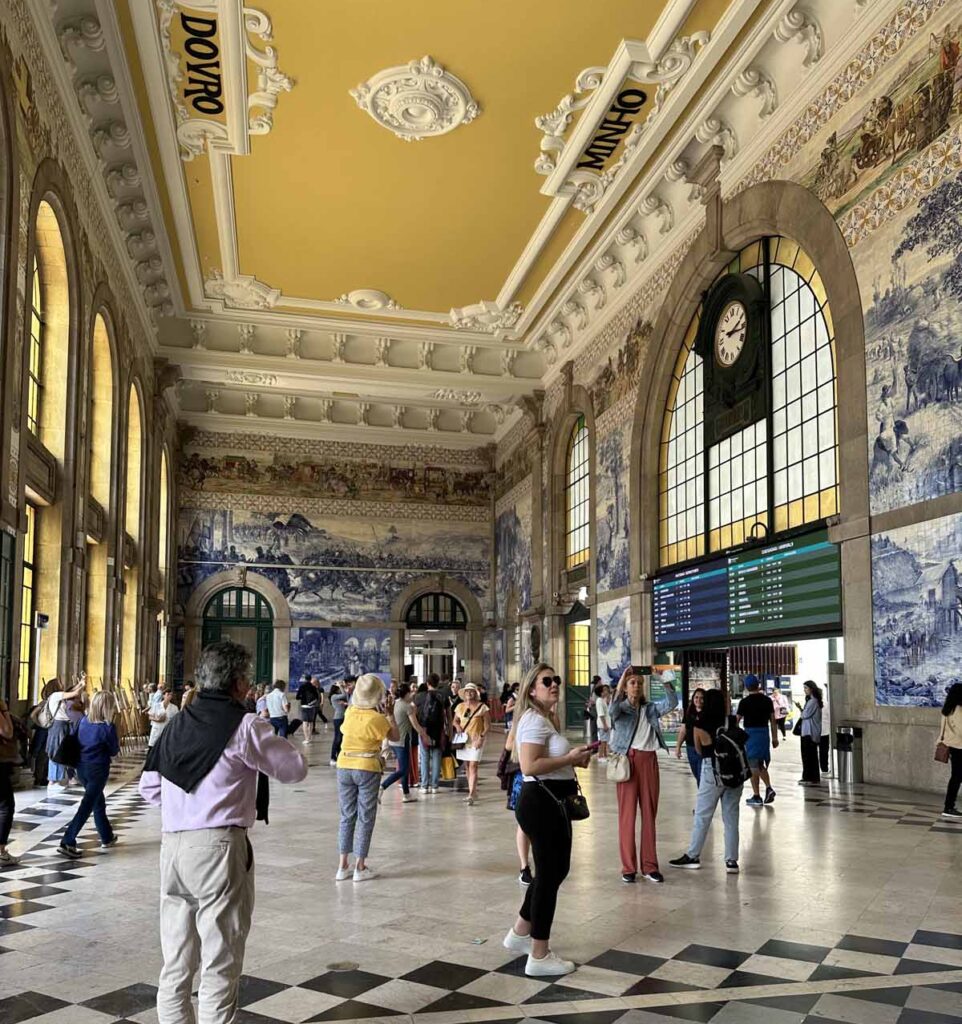




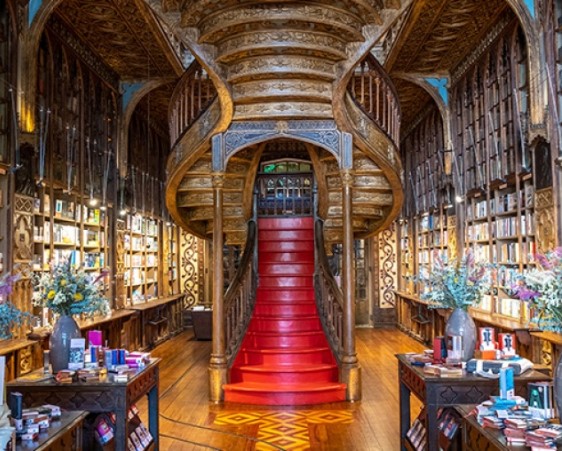


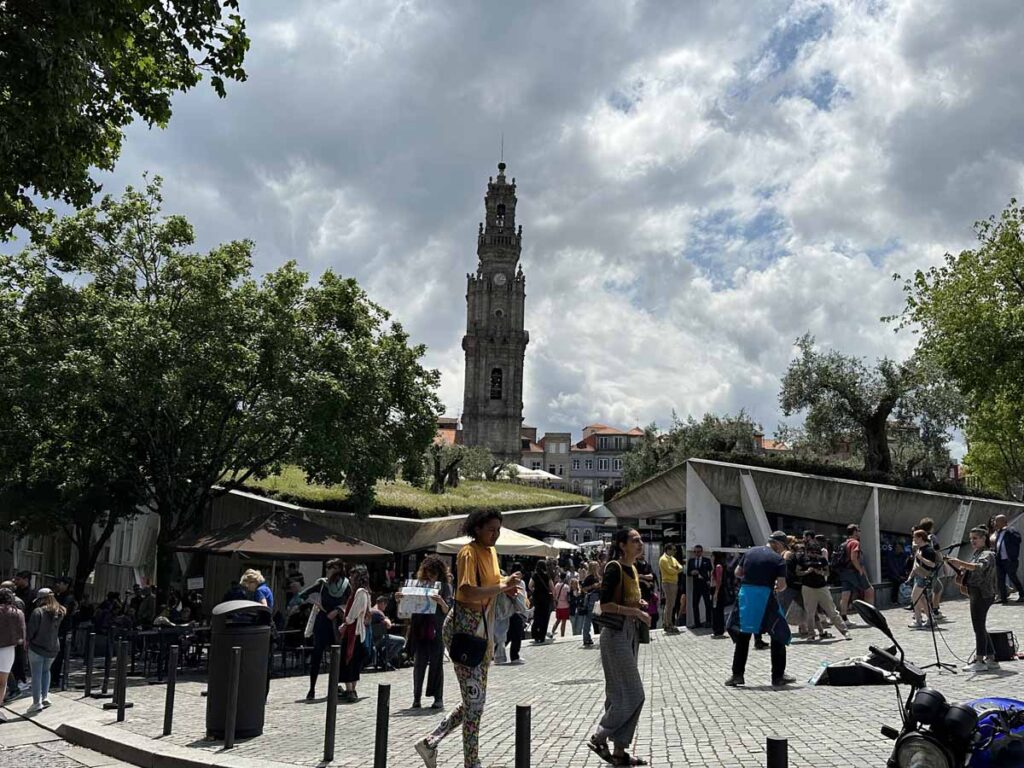



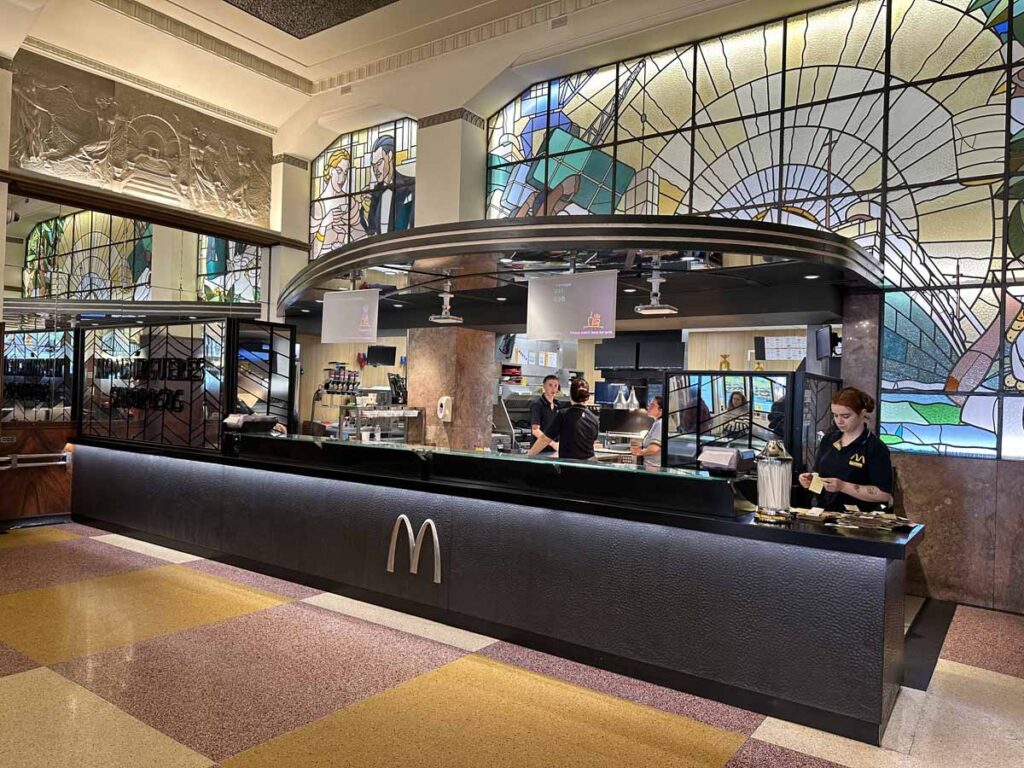



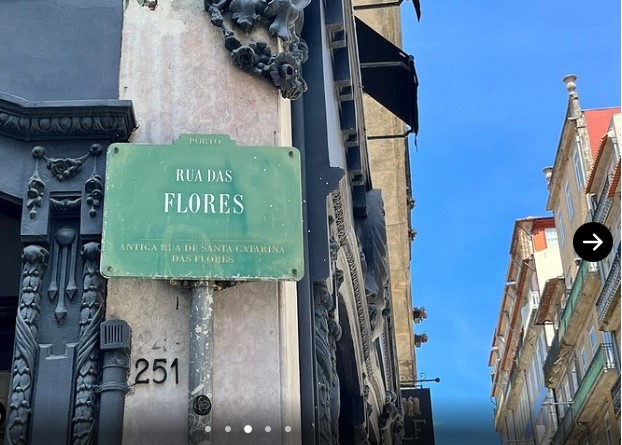
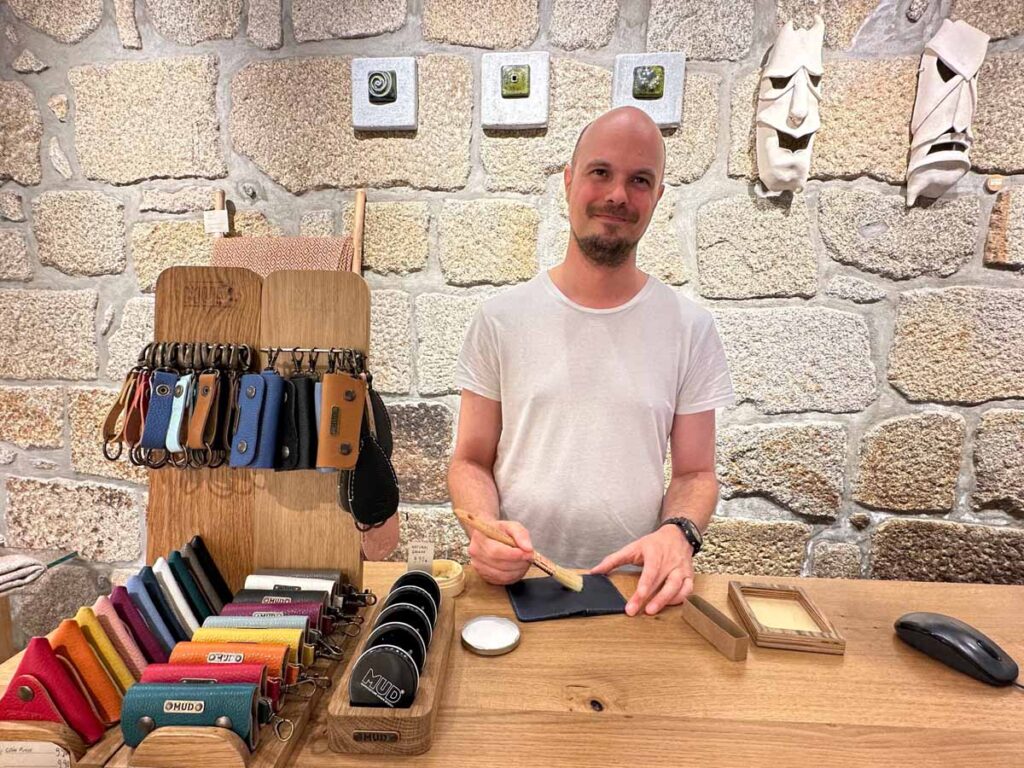

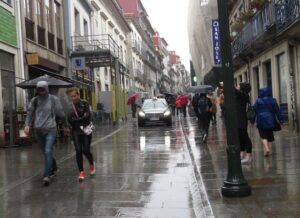










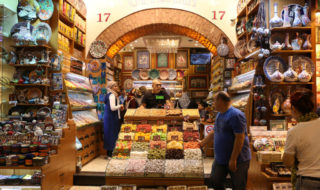

Post a Comment